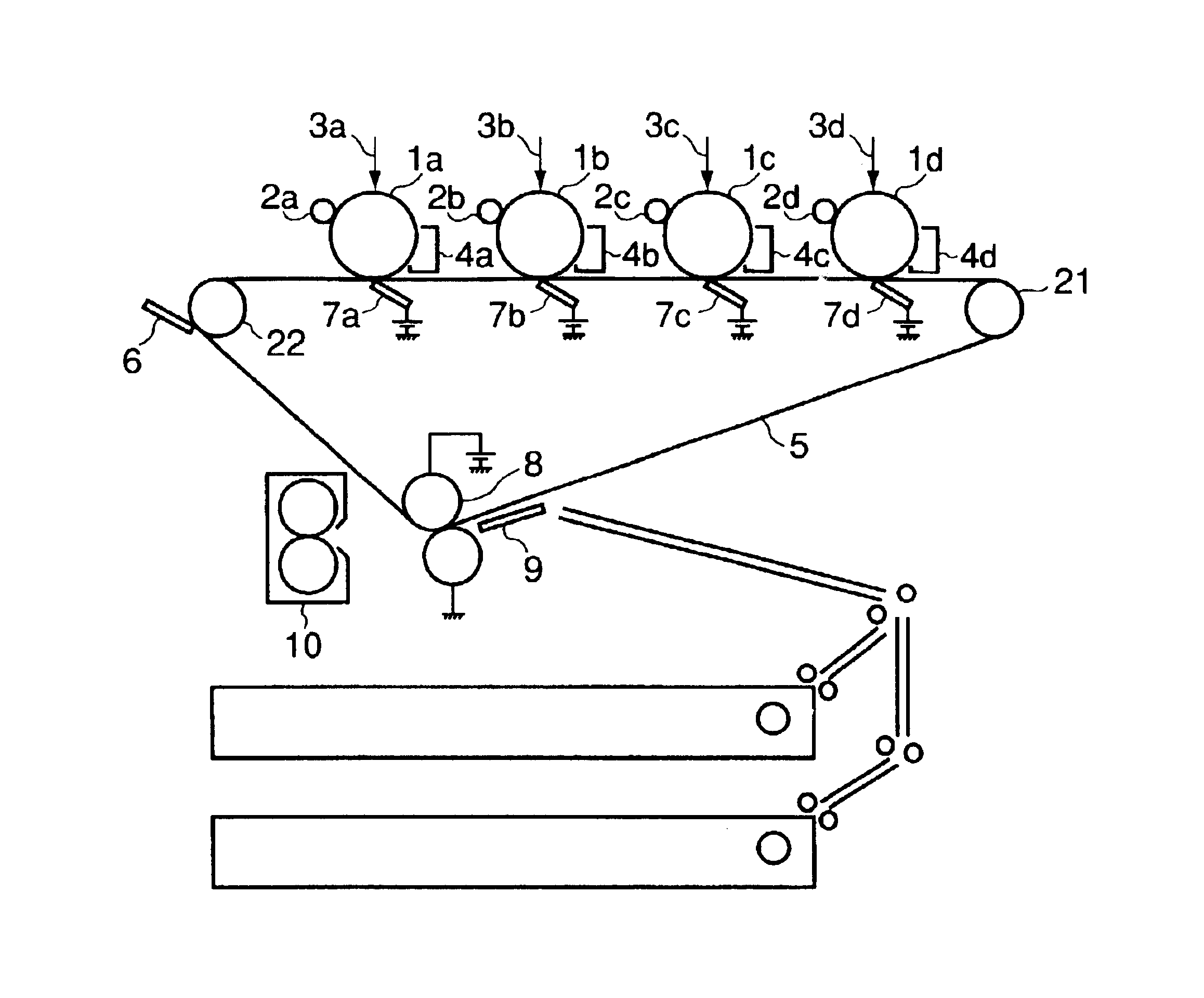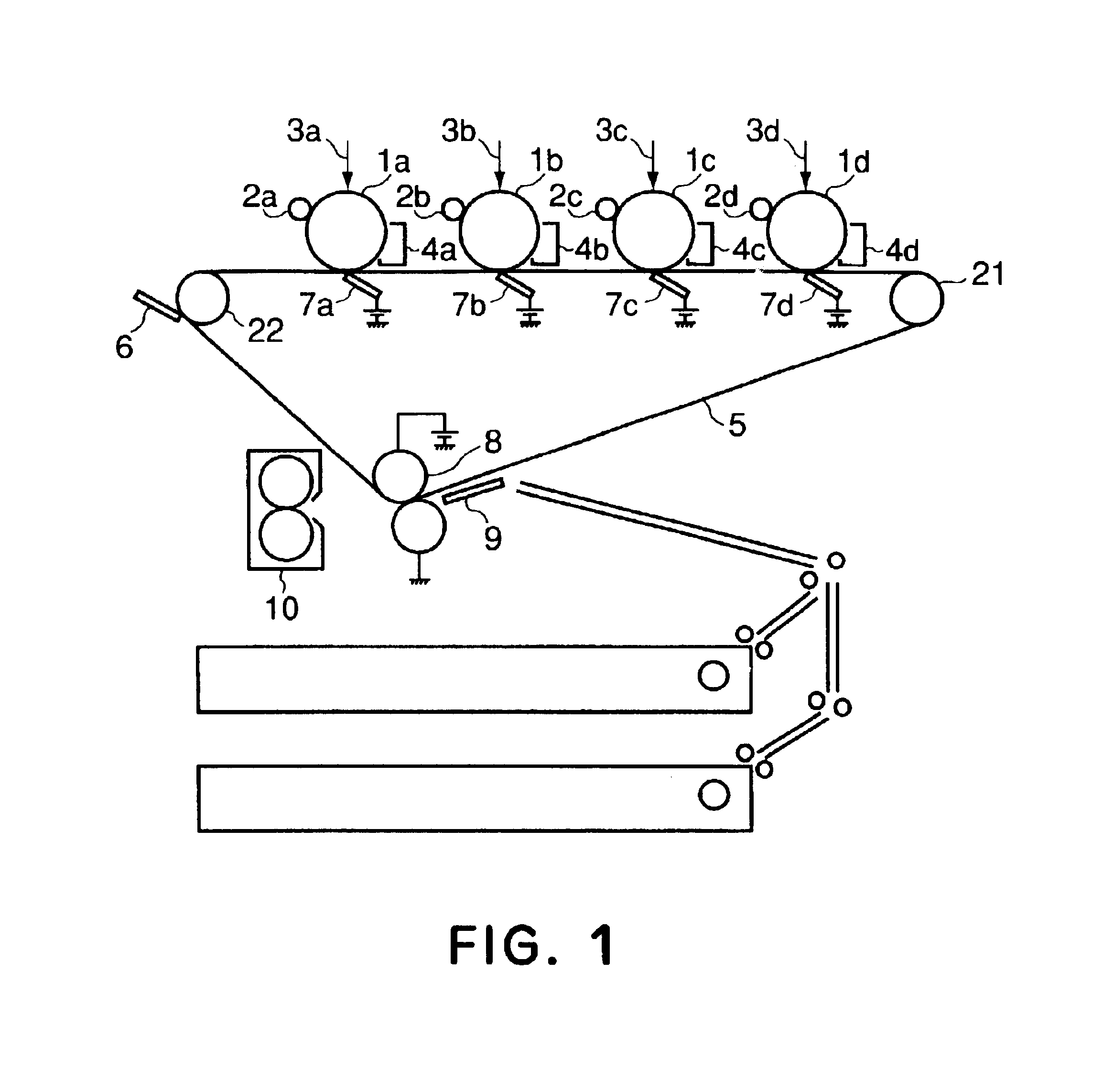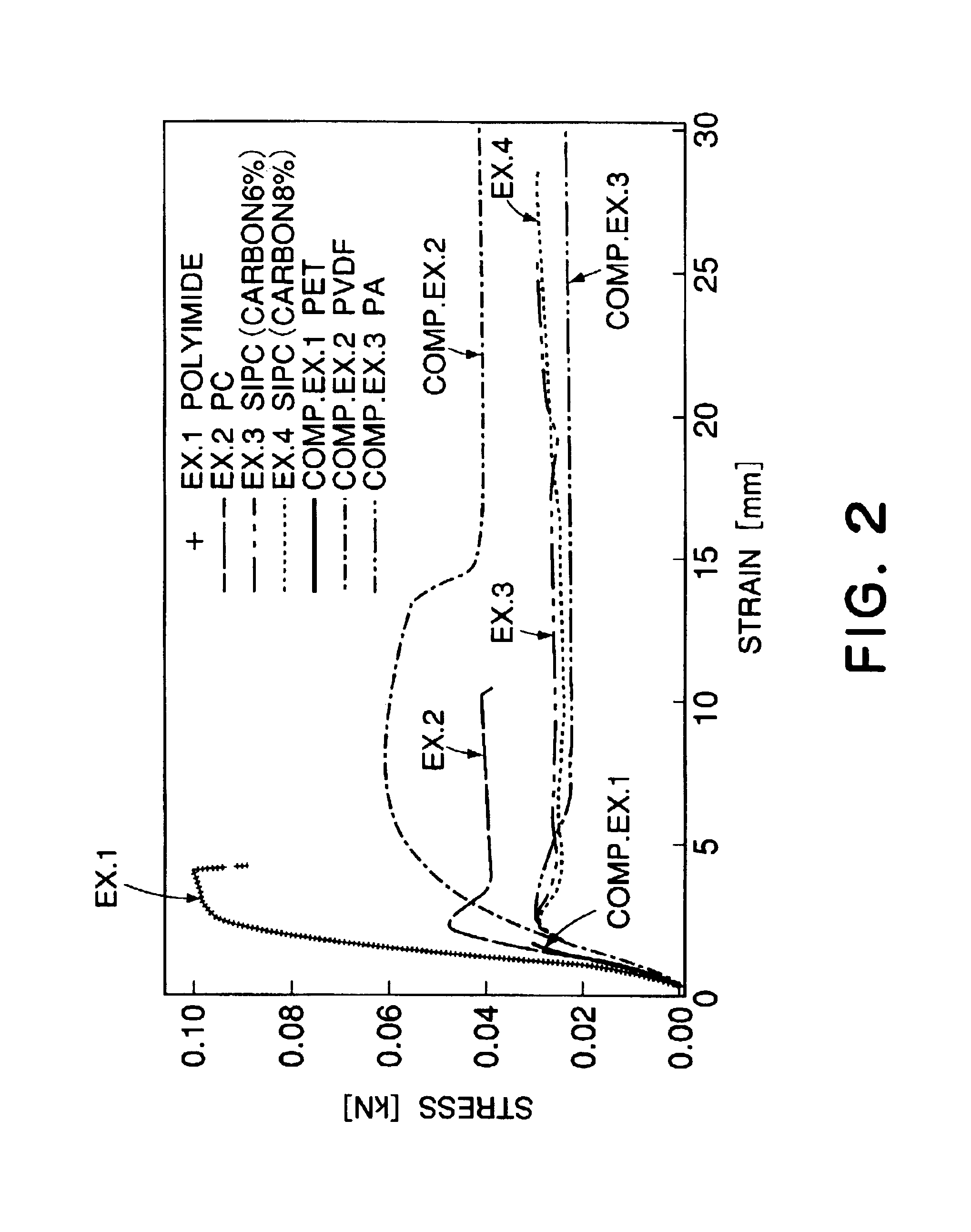However, in such an image forming apparatus, the transfer belt (endless belt) which is rotationally driven under tension may accompanied by the following two problems.
A first problem is that there is a possibility of the occurrence of image failure due to a permanent deformation of the transfer belt.
At the portions where such a waving is caused to occur, image failure is liable to occur.
This is attributable to the occurrence of irregularity in resistance at a transfer nip due to the waving.
When some gaps are formed in the thrust direction as described above, portions where the gaps are formed are supplied with an
electric field smaller than that at other portions where the transfer nip is properly created, thus causing the resistance irregularity.
A second problem is that there is a possibility of rupture of the belt due to a tension which is locally applied.
However, it is difficult to uniformize the macroscopic tension applied to the belt in a plane where the belt is extended.
This is attributable to non-uniformity of the endless belt in terms of its material or a slight deviation of alignment of the belt-extension mechanism.
The non-uniformity of the belt material may, e.g., include a thickness irregularity of the belt, nonuniform dispersion of an electroconductive filler and non-uniformity in
crystallization of a resin.
The thickness irregularity of the belt causes an unevenness of stress in the belt-extension mechanism, and the stress may locally exceed the tensile strength of the belt to cause permanent deformation, and at worst, rupture of the belt.
Further, the incorporation of the filler can be regarded as the presence of molecular-structure defects at spots where the filler is present, so that there is a possibility that the strength of the belt is locally lowered.
As a result, in a state in which the electroconductive filler is non-uniformly dispersed, there is a possibility that the rupture is liable to occur in spots where the filler is concentrated.
Further, progress of
crystallization of the resin is locally caused to occur, so that the material possessing the non-uniformity exhibits energy elasticity at the spots where the
crystallization progresses, thus lowering its elasticity compared with a high elasticity limit attributable to its original entropic elasticity.
As a result, there is the possibility of the occurrence of belt rupture.
Further, stress unevenness may occur also due to the alignment deviation of the beltextension mechanism.
As a result, an uneven torque due to friction between the rib and the rib guide is caused to occur, thus leading to an unevenness of tension in the belt-extension plane.
Even if the regulation by the rib guide is not performed, the alignment deviation cannot be negligible.
In such a case, it may be assumed that a large tension is applied diagonally to the belt in the belt-extension plane, thus leading to the unevenness of tension.
The unevenness of stress due to those factors generates locally a large stress.
If such a localized large stress exceeds the tensile rupture strength of the belt, there is a possibility of rupture of the belt.
Incidentally, Japanese Laid-Open
Patent Application (JP-A) Hei 10-207243 and JP-A 11-167290 have proposed solutions to problems, such as
distortion or deformation of an endless belt but have failed to provide sufficient belt performance.
 Login to View More
Login to View More  Login to View More
Login to View More 


